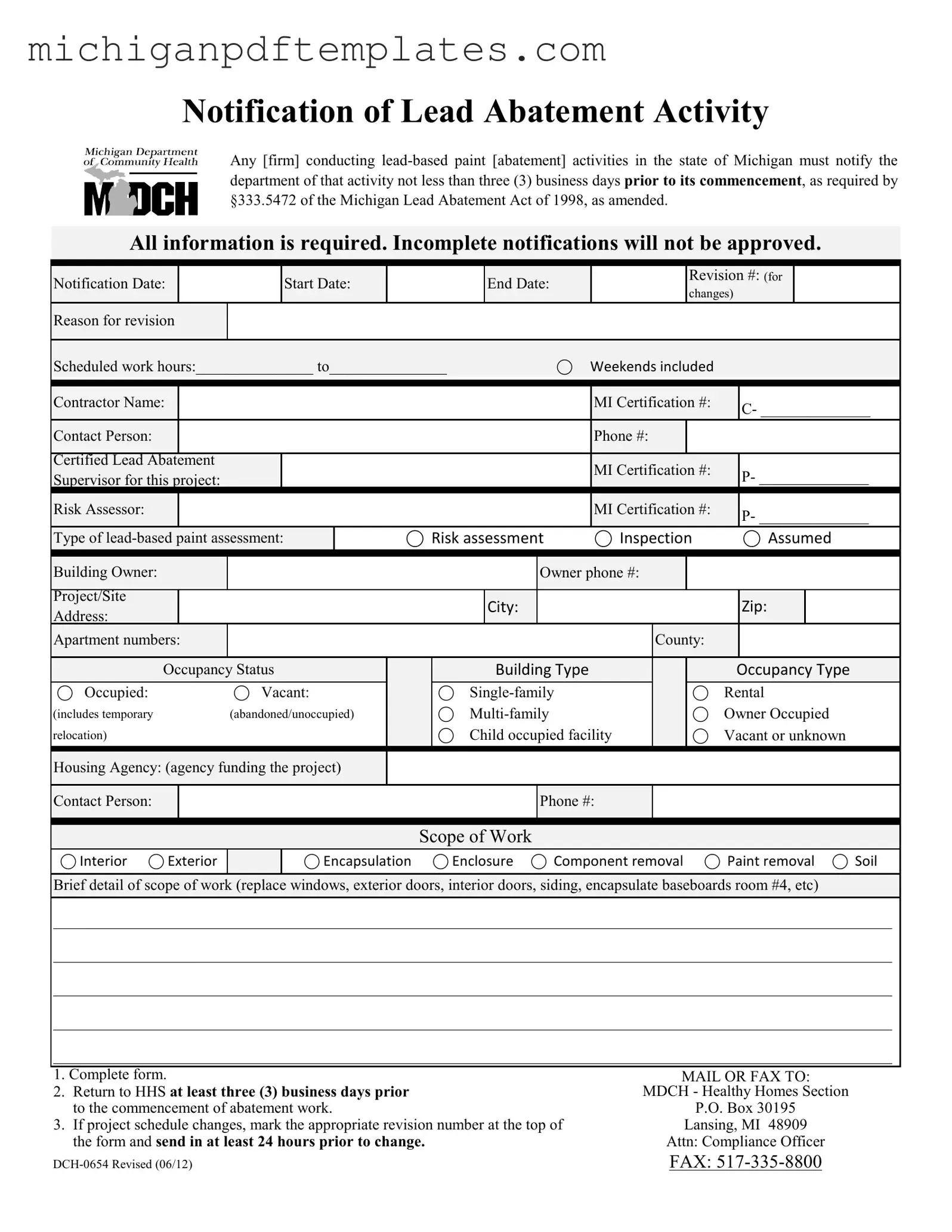In the realm of lead-based paint abatement in Michigan, the Michigan DCH 0654 form plays a critical role in ensuring compliance with state regulations. This form is a notification tool that must be submitted by any firm planning to conduct lead abatement activities within the state. It is essential to notify the Michigan Department of Community Health (MDCH) at least three business days before starting any lead abatement work. By doing so, firms help maintain safety standards and promote public health. The DCH 0654 form requires comprehensive information, including project details such as the start and end dates, contractor information, and the scope of work. Incomplete submissions will not be approved, underscoring the importance of thoroughness. Additionally, if there are any changes to the project schedule, firms must update the form and submit it at least 24 hours before the new schedule takes effect. This proactive approach not only facilitates effective communication with the MDCH but also ensures that all parties involved are informed and prepared for the abatement activities.
